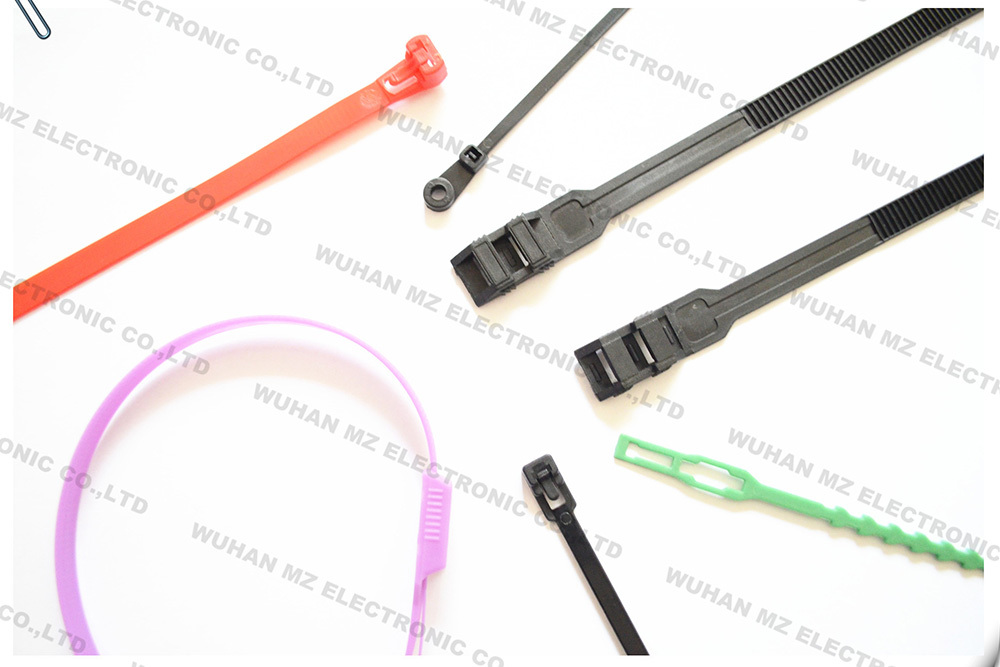11
2025
-
11
Quality identification of recycled plastic cable ties
Author:
How to Identify the Quality of Recycled Plastic Strapping
Recycled plastic strapping is widely used in packaging, logistics, and industrial sectors due to its cost-effectiveness and environmental benefits. However, distinguishing high-quality recycled materials from inferior ones requires systematic evaluation. This guide outlines practical methods to assess recycled plastic strapping quality through visual inspection, physical testing, and chemical analysis.
Visual and Physical Inspection Techniques
Transparency and Gloss
Recycled materials with higher transparency and gloss generally indicate better quality. Translucent or semi-transparent strapping often contains fewer impurities and has undergone more refined processing. Dull or matte surfaces may suggest low-grade recycled content or poor melting uniformity during production.
Color Consistency
Uniform color distribution is critical. Strapping with uneven coloration, speckles, or dark patches likely contains mixed waste plastics or unpurified additives. High-quality recycled strapping maintains consistent hues, even in colored variants, as impurities are minimized during sorting and reprocessing.
Surface Texture and Particle Density
Smooth, dense surfaces without visible pits or cracks reflect advanced recycling technology. Rough textures or loose particle structures often result from inadequate plasticization or contamination with fillers like calcium carbonate. Gently bending the strapping can reveal flexibility—premium recycled materials resist cracking, while inferior ones snap easily.
Performance-Based Quality Tests
Tensile Strength and Elongation
Recycled strapping must meet industry standards for tensile strength and elongation at break. For instance, the Chinese national standard GB/T 22344-2008 specifies that捆扎带 (strapping) should have an elongation strain between 5% and 25%. Samples can be stretched using a tensile tester to verify compliance. Sudden breaks or excessive elongation indicate degraded polymers or improper formulation.
Melting and Flow Behavior
Heating a small strapping sample with a soldering iron or lighter reveals its melting characteristics. High-quality recycled polypropylene (PP) melts smoothly with minimal smoke, while inferior materials may drip excessively, emit black smoke, or produce acrid odors. This test helps identify contamination with polyethylene (PE) or other plastics, which reduce performance.
Floatation Test for Density
Place strapping fragments in water. Premium recycled PP strapping floats due to its low density (0.90–0.91 g/cm³). Sinking samples suggest high filler content or mixed plastics, compromising strength and durability. Adjusting the liquid’s density with salt can further differentiate materials.
Advanced Chemical and Instrumental Analysis
Combustion Analysis
Burning a strapping sample provides insights into its composition. PP emits a faint petroleum smell with blue-yellow flames, while PE produces a waxy odor. Contaminants like PVC release chlorine gas (recognizable by a pungent smell), and mixed plastics may exhibit erratic burning patterns. This method, though qualitative, helps detect harmful additives.
Infrared Spectroscopy (IR)
IR spectroscopy identifies polymer types and additives by analyzing molecular vibrations. Recycled strapping can be scanned to confirm the presence of PP, PE, or other plastics. This technique also detects oxidized polymers, which appear as broad peaks in the spectrum, indicating degradation.
Thermal Gravimetric Analysis (TGA)
TGA measures weight loss during heating, revealing filler content and thermal stability. High-quality recycled strapping shows a single decomposition stage, while inferior materials exhibit multiple stages due to mixed polymers or additives. Rapid weight loss at low temperatures suggests low molecular weight or contamination.
Industry Standards and Compliance
National and International Regulations
China’s GB/T 40006.4-2025 standard for recycled polyolefin mixtures outlines requirements for recycled strapping, including limits on heavy metals, volatile organic compounds (VOCs), and physical properties. Compliance with such standards ensures safety and performance.
Supplier Verification
Reputable suppliers provide certification documents, such as test reports from accredited laboratories. Traceability systems, like those outlined in GB/T 46043-2025, enable buyers to verify the origin and processing history of recycled materials.
Practical Tips for Buyers
- Request Sample Testing: Conduct tensile, floatation, and combustion tests on samples before bulk orders.
- Avoid Overly Cheap Options: Low prices often correlate with high filler content or mixed waste plastics.
- Prioritize Transparency: Suppliers offering detailed material data and compliance certificates are more reliable.
By combining visual checks, physical tests, and advanced analysis, buyers can confidently select high-quality recycled plastic strapping that balances cost, performance, and sustainability.
plastic cable ties
Previous Page
Hot News
2025-11-11
The applicable scenarios of PP plastic cable ties
Polypropylene (PP) plastic zip ties, known for their durability, chemical resistance, and cost-effectiveness, are widely adopted in industrial, commercial, and household settings. Their adaptability stems from PP’s inherent properties, including lightweight design, moisture resistance, and ability to withstand moderate temperatures. Below are key sectors leveraging PP zip ties, along with practical use cases.
2025-11-11
Quality identification of recycled plastic cable ties
Recycled plastic strapping is widely used in packaging, logistics, and industrial sectors due to its cost-effectiveness and environmental benefits. However, distinguishing high-quality recycled materials from inferior ones requires systematic evaluation.
2025-11-10
The high-temperature resistance of Nylon 66 plastic cable ties
Nylon 66 plastic cable ties, widely used in industrial and engineering applications, are renowned for their robust mechanical properties and environmental resilience. Among these, their high-temperature resistance stands out as a critical factor enabling their deployment in demanding environments. This article explores the thermal stability, operational limits, and real-world applications of nylon 66 cable ties under elevated temperatures.
2025-11-10
Classification and characteristics of plastic cable ties materials
Plastic cable ties, widely used in industries ranging from electronics to automotive and construction, are essential for securing cables, bundling items, and ensuring safety. The choice of material significantly impacts their performance, durability, and environmental resistance. This article delves into the primary plastic materials used in cable ties and their defining characteristics.

